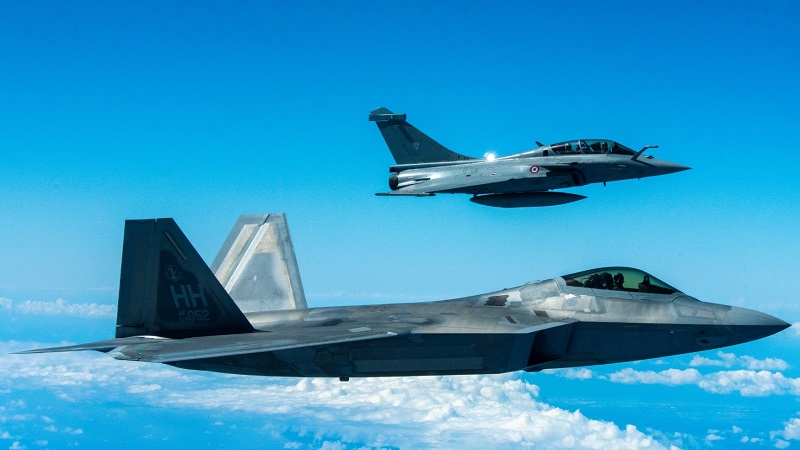The concept of stealth is much broader than the simple principle of avoiding the return of radar waves to its transmitter. The Rafale and the F-22 are thus based on different concepts.
Stealth : how it works or why the Rafale was not thought to be less stealthy than the F-22?
It is the Americans who have contributed the most to the current vision of stealth : being invisible to any radar. Indeed, they made stealth the spearhead of the new generation of aircraft that appeared in the late 1990s and early 2000s. First with the F-117 and B-2 Spirit bombers, then with the F-22 Raptor and finally the F-35 Ligthning II. For the latter two aircraft, stealth is in fact the only major feature separating them from the previous generation of fighter aircraft (in addition to active antenna radars and interconnectivity)
But what does a " stealth aircraft " really mean ? Is an F-22 or an F-35 absolutely invisible on any radar ?
The American case, invisibility in the face of fire control first
To know whether stealth is effective, one must first know how it should work. And for that we must remember how a radar works: it emits wave packets at regular intervals while " listening " in order to know if one or more wave packets have been reflected and sent back by an object. Position and velocity can then be determined by analyzing the phase difference between the transmitted wave and the wave returned after reflection.
To bypass a radar, there are then several possible solutions. The American doctrine is based on two principles :
- The geometry of the devices is studied to disperse the radar waves in a different direction from the incident direction, few wave or no wave returns to the radar, which prevents the detection of the aircraft,
- The use of a special coating that absorbs the waves, so that again no wave returns to the radar.
Today the American devices are optimized for waves with a frequency between 9 and 10 GHz and are relatively effective for frequencies ranging from 6 to 18GHz. Above this frequency range, U.S. devices are as visible as devices of the same size without any protection.
What do these frequencies correspond to and what does it mean ?
These frequencies were not chosen at random they are the frequencies used by fire control radars (radar that locks on to a target) and missile self-directing radar (for missiles that guide themselves rather than being guided by GPS, infrared or a fire control station). Thus, the image of stealth that we have is greatly exaggerated compared to reality, partly by American communication. Indeed all radars working in the V/UHF band (i.e. from 0.03 to 3GHz) are capable of detecting an F-22 or an F-35 (more info in this article).
Thus all civilian air traffic control radars in the world detect, at least in part, stealthy aircraft. Worse : these frequencies being widely used for telecommunications, stealthy aircraft will reflect these signals and passive radars (a type of radar not sending waves but " listening " anyway to know if waves have been reflected towards its direction by a foreign object) can quite detect so-called stealthy aircraft.
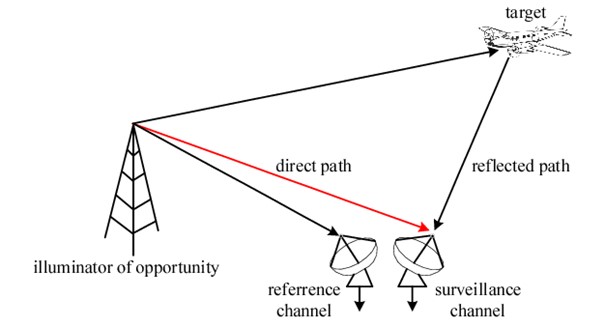

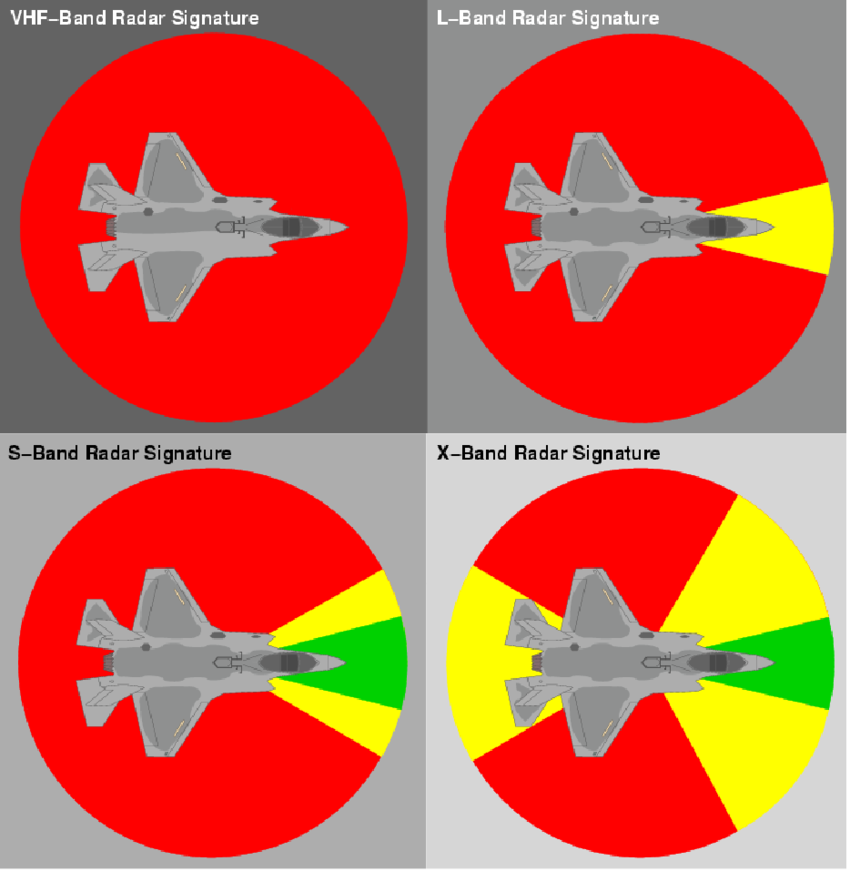

In the American logic, this is not a problem because this frequency band does not allow to obtain with sufficient accuracy the position of the object that reflects the waves : the order of magnitude is 200m of accuracy at 300km distance. This means that no fire control system can use this frequency. Nevertheless it still gives a good estimate of the position, for example sufficient to guide another aircraft for an interception.
So, the use of multi-layer defense system with a wide frequency band like the American Patriot system or the Russian s-300 and s-400 systems can detect the so-called stealth aircraft even if the fire control of these systems will not be possible, this one being done at a frequency of 9-10GHz. The same is true for fighter aircraft, which change their radar mode from 1GHz to 10GHz depending on whether they are in the detection or fire control phase. We can then see the importance of having a 24-hour interception capability or the possibility of connecting ground and airborne sensors with the destruction vectors for better target designation.
The French case, fire control jamming first
Even though the Rafale was designed at almost the same time as the F-22 Raptor, the doctrine adopted to avoid fire control is very different. In the minds of Dassault engineers, since it is not possible to avoid detection of on every conceivable frequency, it is simpler to implement a system that prevents effective fire control in the enemy.
This system is called SPECTRA for " Système de Protection et d'Evitemment des Conduites de Tir du RAfale ", formerly " Système de Protection Electronique Contre Tous les Rayonnements Adverses ", operating on a frequency from 1 to 20GHz. The operation of SPECTRA rests on a principle different from those evoked in the preceding part in order to decoy the radars : if the wave returning to the radar was voluntarily altered, then the radar will deduce an erroneous position for the object.
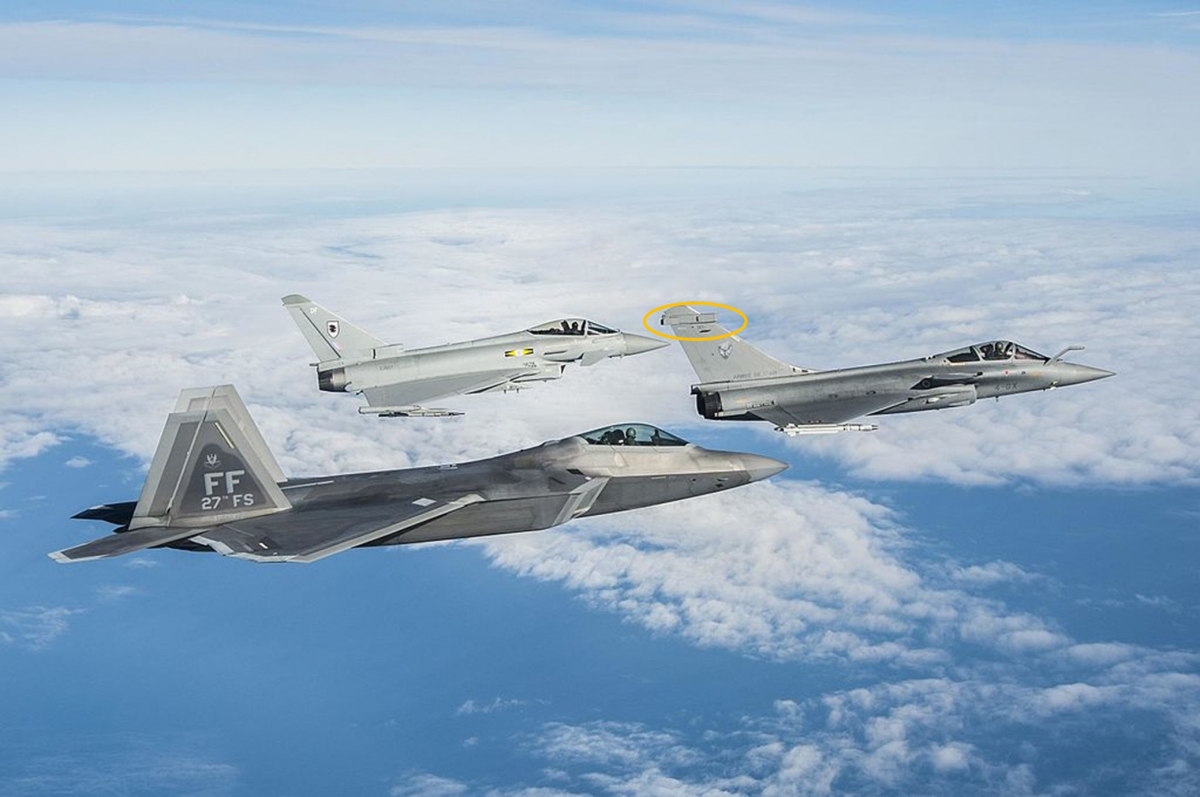

Thus, SPECTRA is based on a set of sensors and jammers offering 360° coverage to the Rafale. The idea is to detect where the radar wave is coming from and send in its direction (as well as other directions in order to fool passive radars) the same signal but out of phase in order to fool the radar electronics. In other words, the enemy will believe that he is receiving the echo of the wave sent, whereas it is a dummy echo sent back by the Rafale's transmitter and will mislead the enemy radar on the position and attitude of the Rafale.
For self-guided missile radars, the idea is the same. But moreover, the electrical power of the missiles being weaker than those of ground radars, it becomes possible to saturate their radar, which usually causes a premature explosion of the device, its electronics concluding that the onboard radar has failed to function.
SPECTRA is not a unique system in the world, so in English it is called a DAS for Defensive Aids System. The EuroFighter has the Praetorian DASS and the F-35 has the AN/AAQ37. Nevertheless, only the Rafale relies so much on this system : SPECTRA weighs a total of 250kg and would represent up to a third of the price of a new Rafale. Regularly updated, it is without doubt the most advanced DAS in flight today.
.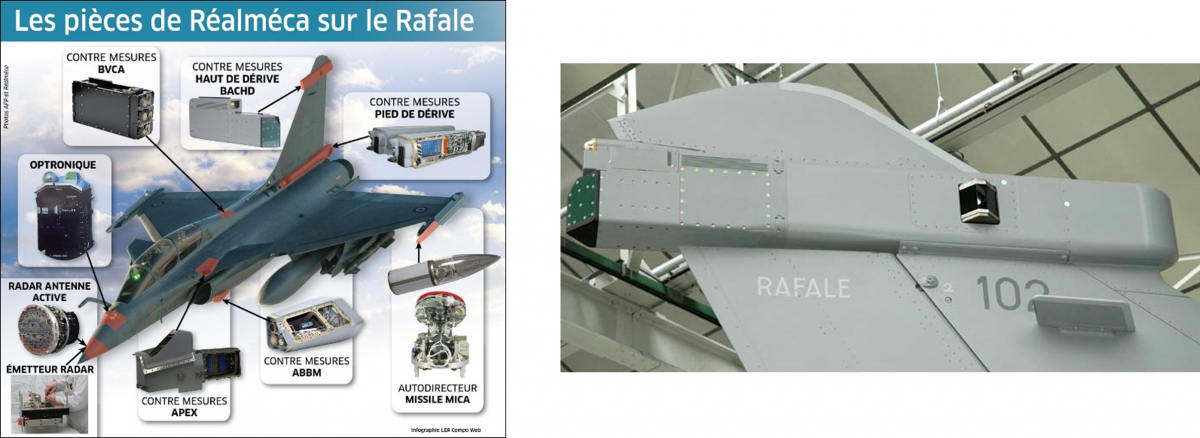

Today, however, pure stealth no longer seems to satisfy the Americans, who are investing in electronic warfare aircraft, i.e. aircraft specially designed for radar jamming like the F-18 Growler, and who announce that the new generation of 6th generation fighter aircraft (which is called NGAD in the USA), will have autonomous flying drones (cf. Air&Cosmos n°2798 digital of September 29, 2022 - the USAF's collaborative fighter takes shape) entirely dedicated to this mission in addition to the basic stealth of the systems, which obviously is no longer enough.
Finally, it should be noted that radars are not the only means of detection, there is also the infrared watch or IRST (which allows to hook an infrared target), a system of increasing performance, almost impossible to jam and for which it is very difficult to be stealthy. This type of detector, which equips the Rafale but not the F-22, will be the subject of a future article.
To better understand the different stealth strategies, here are some visuals
The F-22 and F-35 strategy
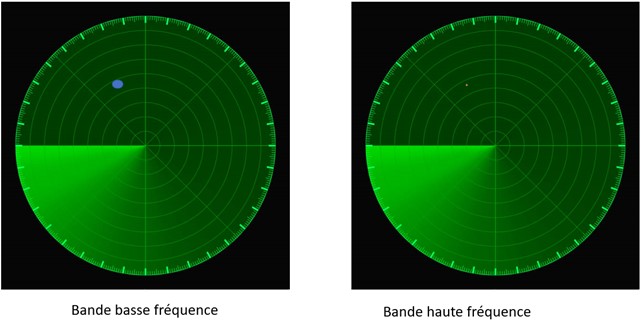

In low frequency, the device appears in a 'normal' way. In high frequency, it almost does not appear, it is at the limit of the resolution and prevents the conduct of fire.
It is not impossible that an interception mission is nevertheless launched, the actual position being rather well known.
The strategy of the Rafale
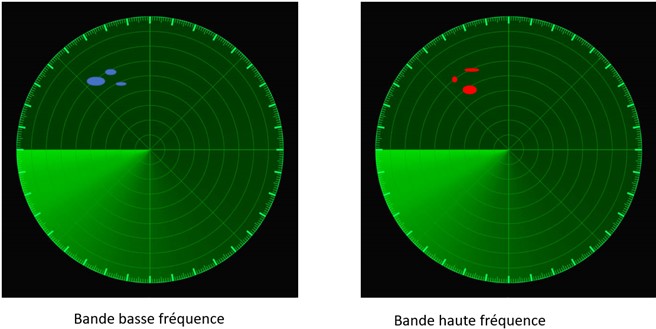

In low frequency the aircraft appears demultiplied, distorted and at positions different from its real position (assuming the real position identical to that of the previous F-35).
In high frequency, the same phenomenon appears, but the distortions and their positon are different since they are not emitted by the same organs of the Rafale as in low frequency.
Fire control is possible but it will take place in the wrong direction a priori. The intercept can be launched, however, the actual position is relatively known.
The F-18 Growler strategy
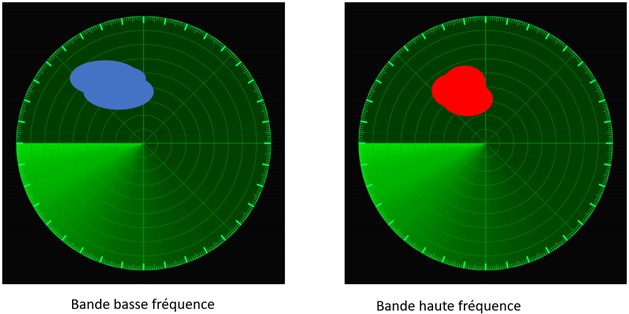

In low frequency the aircraft appears distorted, at a disproportionate size and at a position different from its actual position (assuming the actual position identical to that of the previous F-35). In high frequency, the same phenomenon appears, but the deformed and its positon are different since they are not emitted by the same organs of the F-18 as in low frequency.
The fire control is impossible : the area is too large for a correct interpretation by the software. The interception can however be launched, the real position is relatively well known. However we see the interest of this method : this " cloud " can actually hide many aircraft...
Add that this type of jamming is much simpler to produce against radars emitting only on a single frequency, while it will be more complicated to jam a signal mixing several waves. This is the difference between radars using an active electronically scanned antenna (AESA radar) and those with passive electronic scanning (PESA): in the first case the radar is made up of a multitude of small transmitters each able to transmit at the same time but on different frequencies (case of the Rafale, American aircraft or future versions of the Eurofighter, only delivered for export to date), while in the second case there is only one transmitter which can therefore only produce a wave on one frequency at a time (case of Russian aircraft such as the Su-35).
Découvrez cet article sur Air&Cosmos

